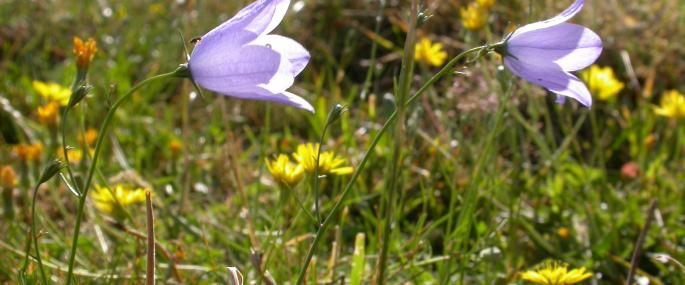The delicate, nodding blue bells of Harebells are one of the prettiest additions to our hedgerows, grasslands, hillsides, sand dunes and cliffs. Flowering between July and September, Harebells grow on dry, mostly undisturbed, ground, but are tolerant of all kinds of habitats. It is regularly visited by bumblebees and Honey Bees, providing an autumnal source of nectar for these insects. In Scotland, this is often the plant referred to as 'bluebell'.
Like many of our native plants, Harebells are an excellent source of nectar and pollen for all kinds of insects including bumblebees and butterflies. To encourage wildlife into your garden, try planting native flower species in your borders to provide a 'nectar-cafe'. To find out more about wildlife-friendly gardening, visit our Wild About Gardens website: a joint initiative with the RHS, there's plenty of facts and tips to get you started.
